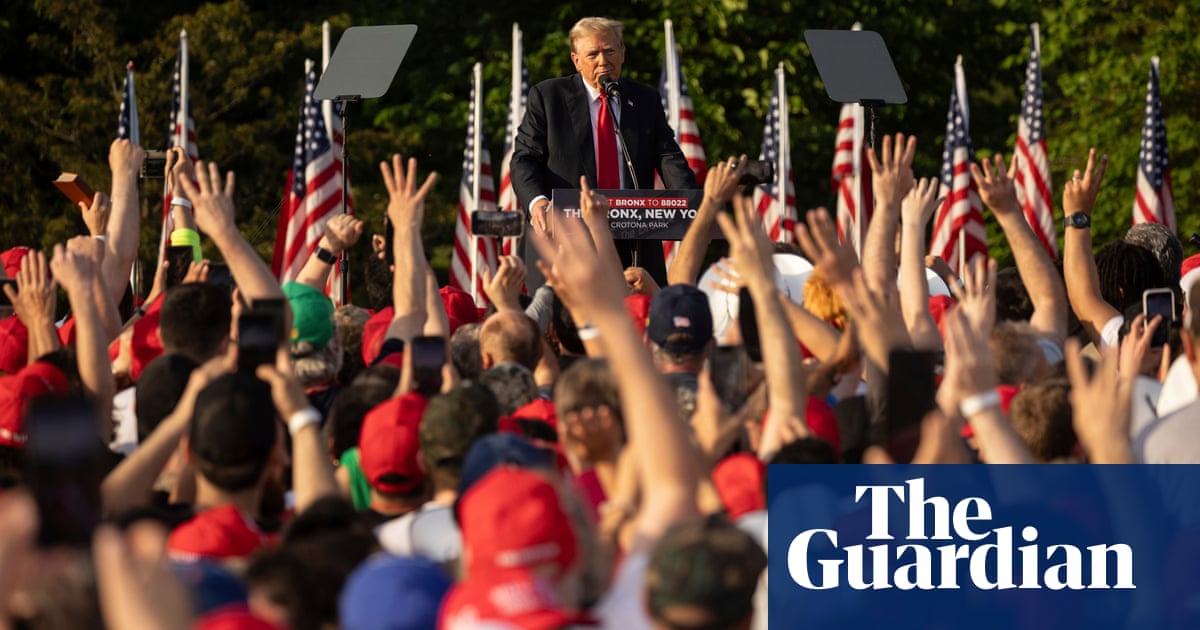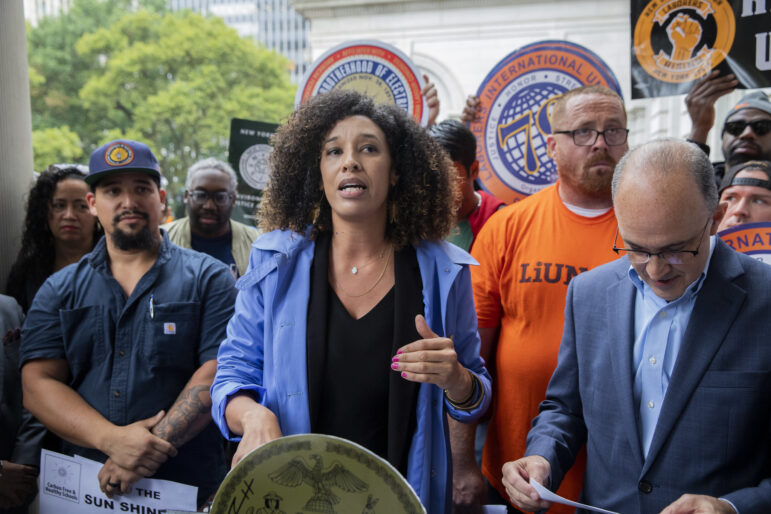Jobs
How Trump won over voters in deep-blue New York City

Donald Trump’s presidential win was ultimately determined by voters in swing states, but a shift towards the Republican was seen across the country – even in the deeply Democratic stronghold of New York City.
While Kamala Harris won New York by a handy margin, with 68% of the vote to Trump’s 30%, that was a marked drop from Joe Biden’s performance in the city in 2020; that year, Biden won New York by a 53-point margin.
“Almost no place has seen a bigger increase in Trump support than the five boroughs [of New York City],” Nate Silver, the renowned political pollster, wrote on Thursday.
One of those boroughs, Staten Island, has been in bed with Trump since the beginning – the president-elect carried the majority-white area in 2016 and 2020 – but the shifts elsewhere are more surprising.
The Bronx, which has a large Latino population, saw the largest swing towards Trump in the state: Joe Biden won 83% of the vote there in 2020, compared with Trump’s 16%. This time round, Harris won by 73% to Trump’s 27%. In 2016, Trump won just 21.8% of the vote in Queens, his home borough, but this week 38% of voters there cast their ballot for the former and now future president.
In fact, every single county in the New York City metropolitan area swung towards Trump compared with four years ago, Gothamist reported. It’s a staggering shift for a multicultural, heavily Democratic city, given the divisive and racist nature of Trump’s campaign.
But it shouldn’t have come as a huge surprise to Democrats, said Lawrence Levy, former chief political columnist for Newsday and executive dean of the National Center for Suburban Studies at Hofstra University.
“Something started happening in 2021,” Levy said. “This did not come out of the blue.”
That year, New York City politics started seeing some reactions to “post-pandemic pain”, Levy said, as some voters from demographics including the white, Latino and Asian communities shifted away from Democrats in local elections. In the 2022 midterm elections, New York City retained its Democratic members of the House of Representatives, but some suburban voters to the north and east of the city elected Republicans.
“The question is: what does this all mean?” Levy said.
“I think we’re at an inflection point where once the echo of pandemic pain finally fades, we’ll either go back to where we were – which is that New York City is reliably blue and that the surrounding suburbs will go back to being purple to light-blue places.
“Or it’s the bigger pendulum that: ‘OK, Democrats had their run for 30 years, and now the pendulum is going to swing back the other way.”
While New York City has reliably voted for Democratic presidents, two out of its last four mayors were elected as Republicans – although they weren’t the blood-and-thunder candidates who have come to dominate the modern GOP.
Mona Kleinberg, a professor of political science at the City University of New York, Queens College, said it was unclear yet whether the swing towards Trump was a result of people who voted for Biden casting their ballot for Trump, or those voters not voting at all – just as nationwide, Harris received fewer votes than Biden.
In terms of why Harris underperformed compared with Biden, Kleinberg said New Yorkers were not immune to two of the key issues that motivated people around the country: the economy and inflation.
after newsletter promotion
“In New York, the economy was huge, because New York is an unaffordable city. Rents have gone up so much after Covid, and then you have a candidate who promises to, essentially, bring inflation down even more, who promises to bring rents down,” she said.
“New Yorkers are not universally affluent, and so they care about those issues. So I think with inflation, or the economy more broadly, Donald Trump had a better message on that.”
Despite New York being one of the most diverse cities in the US, immigration also played a part, Kleinberg said. The city has received about 200,000 new immigrants in the past two years, as states including Texas have sought to create chaos by sending tens of thousands of undocumented immigrants on buses to New York.
Eric Adams, the Democratic mayor of New York – whose popularityplummeted after he was charged with taking bribes and foreign campaign contributions and appears to have been trying to cozy up to Trump in recent days – handled the immigrant situation badly, Kleinberg said, which could have further turned voters away from the party.
A scheme where immigrant families were given prepaid debit cards became a particular focus for conservative critics, and may have played into ideas that Democrats are out of touch.
“If you feel like every time you’re going grocery shopping, you’re broke afterwards, and then you know that there are asylum seekers in your city who are getting debit cards with a certain kind of allowance to live, that breeds resentment. And if you don’t have a message that explains this to people, then they are just angry,” Kleinberg said.
“So I think you know this was a referendum not just on Biden’s legacy, or the Biden-Harris administration, but this was also a referendum on the Democratic leadership in New York City.”
National and local issues both played a part in the swing, then – although something more fundamental may also have played a part.
“Obviously, Trump was running on an anti-immigrant message and, of course, Kamala Harris was the actual embodiment of an immigrant – she’s the daughter of a south-east Asian mother and a Jamaican father,” Kleinberg said.
“And again: the fact that she is a woman, and a woman of color. There’s a lot of unconscious biases that introduce in people’s perceptions of her capabilities. And I think that in this whole cocktail of reasons for why people migrated towards the right.”










